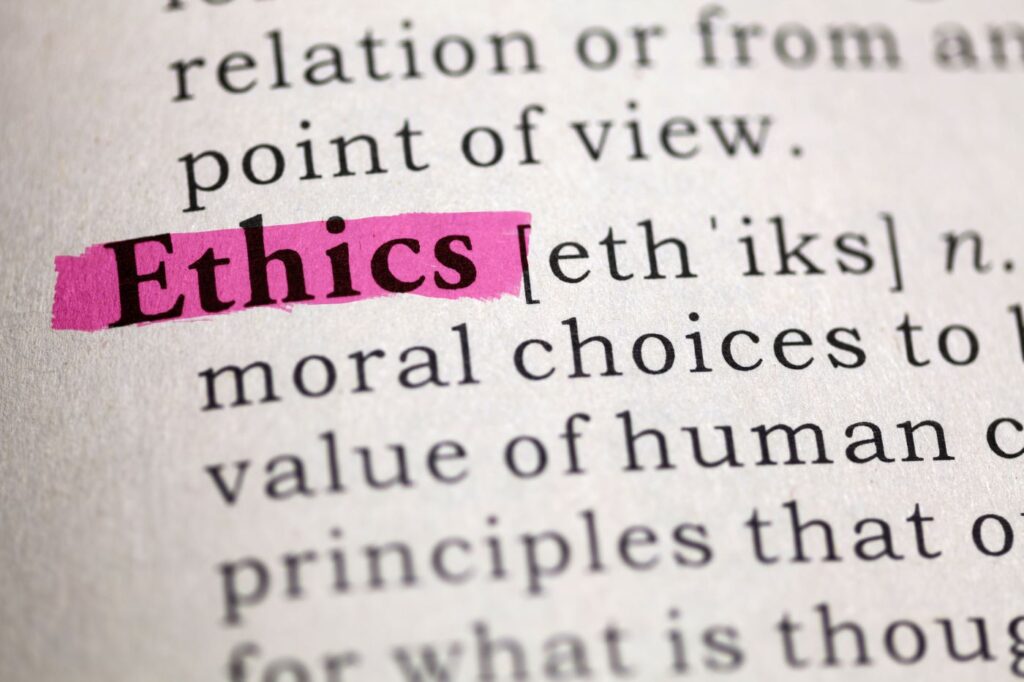Today, I answer one of four questions sent in by a single reader. It is a timely but complex question, and answering it precludes answering that reader’s other interesting questions, or the questions sent in by others, some of which I hope to address in the future.
The reader writes:
Are there any circumstances in which pregnancy termination could be acceptable if the baby is pre-viable/unviable and termination protects or preserves the mother’s health?
The most common example of this is ectopic pregnancy. But the scenario I see often as well is pre-viable premature rupture of membranes, or PROM (meaning the mother’s water breaks before the baby can survive outside of the womb) at seventeen weeks, for example.
Start your day with Public Discourse
Sign up and get our daily essays sent straight to your inbox.There is no clear path forward for women in this situation. Generally, women are counseled with different “options,” including terminating the pregnancy or inducing labor at that time, versus expectant management under close surveillance (i.e., doing nothing and waiting to see what happens). I feel more comfortable with the latter option because of the small chance that this pregnancy could reach viability and thus the baby could survive.
My question is: if mom began to exhibit signs of sepsis during this time while the baby still had a heartbeat, would it be acceptable to induce her labor and thus end the baby’s life (as it would likely not survive the labor process and definitely not live outside the womb)? There are other, less common, medical circumstances that present this same ethical dilemma, but I guess my question is essentially the same. Is it okay to prioritize mom’s life and health in these situations?
The author describes two situations. In the first, a pre-viable child faces a very high risk of death because of premature rupture of membranes (PROM), but the mother’s life and health are not yet at high risk. In the second case, in which the mother begins to show signs of sepsis, the risk to the mother is increasing. The most significant of such cases are sometimes called “vital conflict” cases. Both the mother’s and the child’s life or health are at serious risk and only the risk to the mother can be mitigated. How should these situations be ethically addressed?
An important guide for thinking about this question is “Concluding Pregnancy Ethically,” issued by AAPLOG, the American Association of Pro-Life Obstetricians and Gynecologists. In writing about the variety of difficulties that can be faced in pregnancy, the authors say that “many women’s health advocates and . . . many physicians do not seek alternative paths that could support maternal health during a pregnancy, but instead choose to end the pregnancy out of fear or blind adherence to what they are taught.”
So, for example, in the first situation described by the reader, where the child is at risk but the mother is not (or not yet), the mother might be encouraged to undergo an abortion on grounds that continuing the pregnancy until its natural resolution might be emotionally or psychologically difficult. Similar approaches are advocated when the child has an abnormality that threatens to shorten his or her life. Rather than carry the pregnancy to its natural resolution (when sometimes, at least, the child will live for a few hours, days, or even longer after delivery), the mother will be encouraged to abort in order to resolve the situation.
Likewise, in vital conflict situations, mothers are encouraged to undergo surgical abortion rather than what AAPLOG calls “artificial separation,” typically induced delivery, which will save the mother but probably result in the child’s death. The child is likely to die in either case; does it matter how that death is brought about?
The starting point for all deliberations on this issue should be this: it is always morally wrong to intend the death of an innocent human being. Thus, any intervention in the pregnancy that seeks to end the fetus’s life, even for the sake of protecting the mother’s life or health, is not to be chosen. Many interventions that I have described above do seem to fail in this regard: they involve ending the pregnancy by ending the child’s life. Those should not be chosen. But they do not cover all the possibilities.
I won’t here give in-depth attention to the question of ectopic pregnancy, on which much has been written. But the principle that guides the treatment of ectopic pregnancy is essential to considering the author’s question. A common way of treating ectopic pregnancy, in which the embryo is implanted in the fallopian tube, creating a lethal threat of tubal rupture, is to remove part of the tube with the embryo inside it (salpingectomy). This inevitably results in fetal demise. Is this also ruled out by our just-mentioned starting point?
It is not: the death of the embryonic child is not intended in the removal of that child from a location in which he or she will be unable to mature to viability and at which his or her presence creates grave risks to the mother’s health. Morally speaking, the death is a side effect. So removal is not automatically ruled out of moral consideration.
Of course, the removal of a child from her environment, with death as a side effect, does not automatically make removal morally correct; doing anything that has a lethal effect on another must also be fair if it is to be morally upright. And so one must ask: is a mother who has her ectopic pregnancy addressed by salpingectomy being unfair to her child? And the answer again seems to be negative: the mother could reasonably say to her child, “If I could save you, I would; but I cannot, and am pursuing the only path available in which only one of us perishes.” There seems to be no violation of the Golden Rule here.
I’ll suggest below that there are additional ways in which fairness plays a role in these contexts, but this is a good start: when both the mother’s and child’s life are at risk, and only the mother’s life can be saved, it is not unfair to do so, and is morally permissible so long as the child’s death is not intended.
So let’s now consider cases of premature rupture of membranes (PROM) and other cases where both mother and child are at risk (such as extreme hypertension, partial molar pregnancy, and others; see “Concluding Pregnancy Ethically,” page 11, for a more comprehensive list). Medical professionals must act as soon as there are signs of sepsis in order to protect the life of the mother. Does it matter whether her life is saved by an intervention upon the body of the child, such as in dilation and curettage (D&C) or dilation and extraction (D&E) methods, both of which dismember the fetus, as opposed to induced labor, which takes longer but will result in an intact, though deceased or dying, fetus?
Most of the philosophical literature on this topic by pro-life authors is concerned with the question of intention: is the death of the child intended if a method of extraction is used that physically and lethally impacts that child directly? Arguments about the well-known “Phoenix” abortion case, in which a placentectomy (detaching the placenta) was performed and the child dismembered in the course of extraction, have divided Catholic and other pro-life thinkers over whether the child’s death was intended.
Similarly, one might worry that a D&C or D&E to remove a pre-viable child from a mother suffering blood loss from hemorrhage would involve intentional killing, because of the direct and lethal impact of the intervention upon the child.
I have expressed doubts about such analyses of intention elsewhere, and do not propose to rehearse them here. Reflection on the AAPLOG document has led me to see an important potential shared ground between those who do and those who do not think that these surgical procedures inevitably involve an intention to harm or kill the child.
Consider what AAPLOG says in response to the question, When is it acceptable to induce labor for a life-limiting fetal anomaly? AAPLOG questions the use of the common description of such an anomaly as “incompatible with life,” because, in the case in question, the fetus is alive. The anomaly, such as trisomy 13, trisomy 18, or anencephaly, will, however, certainly limit the child’s life, bringing it to an untimely end, and so should be described as a “life-limiting” anomaly.
But consider what steps we would take for a child of two, or five, or nine, who had developed a life-limiting condition such as cancer. Let us suppose we know that cancer is incurable and inevitably lethal. The remaining days, weeks, or years of the child’s life will be a time of both immense grief and of celebration of the life that is still present in our child. They are also, to some extent, days of hope. While we would not unreasonably prolong life through the use of expensive and invasive medical interventions, we also would not hasten death, even as a side effect. And so, by extension, when expectant waiting is possible for a pregnancy’s natural resolution, that seems like the fair response to the value of our child’s life: what we would not do to our born children (hasten their demise), it would be unfair to do to our unborn children.
And further: what parents would not, even at some cost of time, convenience, and personal risk, attempt to preserve their born children from a violent form of death, even when a more peaceful form of death was inevitable?
The parallel to vital conflict cases is clear: do not too quickly assume that death is inevitable. Do not too quickly assume that active rather than passive harm needs to be inflicted, even as a side effect. Do not too quickly assume that an intact corpse is impossible. These are all assumptions we would avoid in thinking about our born children.
It is wrong, even when the mother’s life is endangered, to treat that mother’s child as a hostile intruder or a malignant bit of tissue in need of removal.
Similarly, the approach taken by the physician can either reflect or fail to reflect such concerns. It is wrong, even when the mother’s life is endangered, to treat that mother’s child as a hostile intruder or a malignant bit of tissue in need of removal. Much more respectful, I think, is the doctor who says: “We need to act fast to save you and I’m afraid your baby won’t make it. Who would you like to come in to say goodbye to the baby with you?”
We are extraordinarily fortunate in the developed world that we have the medical resources to make the patience that such approaches require possible. As AAPLOG notes,
In countries with modern healthcare infrastructure, medical science is usually advanced enough to support the maternal patient through the 24 hours or less typically required for such inductions. If need be, blood product replacement and intensive care can be employed to protect the maternal life to achieve successful induction of an intact fetal body without resorting to fetal dismemberment.
The question of intention remains important in places without such resources: what are the limits to the permissible treatment of vital conflict cases when a delay in extraction will mean the death of both child and mother? But such cases (we should be grateful) are rare to nonexistent for us.
To return, then, to our reader’s question: there do seem to be reasons, especially reasons of fairness and parental love, not to hasten the process of inevitable but natural separation when a pregnancy is in distress but the mother’s life and health are not yet compromised. This seems true even when there is very little likelihood of the pregnancy’s proceeding to viability. And when things progress further, toward the existence of a genuine vital conflict case, there are reasons to prefer induced labor, when possible and safe, over surgical removal regardless of one’s views on surgical removal and intention. The sacrifices we would make for our born children to prevent a hastened, although inevitable, death, or to ensure an intact rather than a compromised body of a loved child, point the way for us here.
Submit your own ethical questions to Chris!
Image by Feng Yu and licensed via Adobe Stock.













